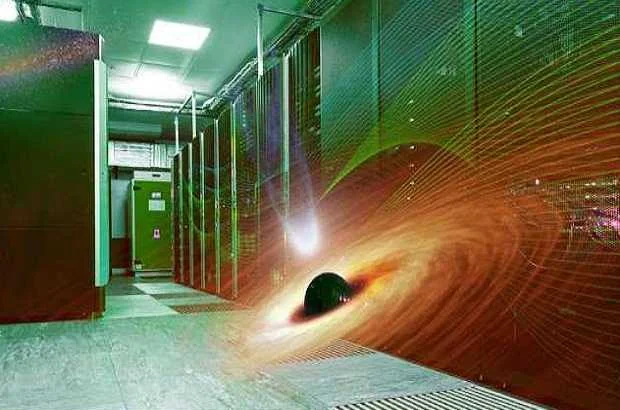 |
| Supermassive black holes and supercomputers |
Researchers use supercomputers to understand and predict signs of black holes
New 3D simulations on powerful supercomputers help predict the formation of growth disks and relative jets, which are sized by the strong gravitational forces of the black holes and the strong magnetic forces they generate.
Supermassive black holes
In the order of hundreds of thousands to billions of solar masses, a supermassive black hole (SMBH) is the biggest form of the black hole and it is found almost at the center of most known giant and massive galaxies currently. In the case of the Milky Way, supermassive black hole matches the location of Sagittarius A*.
Supermassive black holes have properties that separate them from low-mass classification. Firstly, in the case of some supermassive black holes, the average density of SMBH can be lower than the water density because the Schwarzschild radius is directly proportional to the mass, whereas the density is inversely proportional to the volume.
As the volume of the spherical object is directly proportional to the cube of the radius, the density of the black hole is inversely proportional to the square of the mass, and thus the average density in high mass black holes is less. In addition, tidal forces around the event horizon are not strong for massive black holes. While any significant tidal forces will not be experienced by stellar mass black holes at very depth.
Supercomputers
A supercomputer is a type of computer with high-level performance compared to a normal purpose computer. A supercomputer has resources, architecture, and components to get huge computing power.
The Universe in a Box
Big Bang has captured our imagination like any other theory in science: the glorious, explosive birth of our universe. But did you know what happened next?
Professor Michael Norman, a lead author of a new review published in Frontiers in Astronomy and Space Sciences, said in a statement” About 100 million years of darkness. When the universe eventually burned their first stars, they were larger and bright than any person. They became so intense with UV light; it turned the atoms of the surrounding to ions. Cosmic Don - From the first round of the completion of this 'Cosmic Reunion', lasted nearly a billion years.
Some researchers like Professor Norman have solved mathematical equations in a cubic virtual universe and explained “We have spent more than 20 years in using this software for better understanding and cosmic donation.
The first stars, the first heavy elements made in the pressure-cooker core: a smidgen of lithium and beryllium. But with the death of these short-lived veterans - falling and explosion in a shiny supernova - heavy metals in the form of iron were made in abundance and thrown into space.
From stars to galaxies
The new generation of stars formed in galaxies is small and very high due to the chemical reactions made with metals. The increase in the number of reactions in the gas clouds caused them to break and block many stars through the metal line.
The first galaxies are smaller than expected because the youth, intense radiation from heavy stars runs dense gas away from star-producing areas.
Thinking outside the box
Professor Michael Norman and his colleagues explained how some groups are able to control the computing boundaries by importing their finished results in these numerical simulations or simplifying portions of relevant models for the results of interest. These semi-analytical methods have been used more precisely to determine how long the initial free stars of metal were being made, how long they can be seen, and their contribution - as well as Black Holes and metal-rich stars - for the cosmic reunion or reionization.
The authors have also highlighted areas of uncertainty that will run a new generation of simulations in the future using the new code on high-performance computing platforms.
Journal reference:
Astrophysical journal: DOI, https://phys.org/journals/astrophysical-journal/
Tags
black holes
computer animation
galaxies
massive galaxies
space
supercomputers
technological advances
technology
